 | |
| Author | Edgar Wallace |
|---|---|
| Country | United Kingdom |
| Language | English |
| Genre | Crime |
Publication date | 1918 |
| Media type | |
The Clue of the Twisted Candle is a 1918 crime novel by the British writer Edgar Wallace.
 | |
| Author | Edgar Wallace |
|---|---|
| Country | United Kingdom |
| Language | English |
| Genre | Crime |
Publication date | 1918 |
| Media type | |
The Clue of the Twisted Candle is a 1918 crime novel by the British writer Edgar Wallace.
In this tale, John Lexman, a renowned mystery writer, is drawn into a murder plot by a wealthy benefactor, only to be betrayed and sent to prison. His friend, the Scotland Yard Commissioner T.X. Meredith, tries to prove he was duped into the murder, only to have him escape from prison. Events lead to another murder and a series of surprises.
In 1960 it was turned into the film Clue of the Twisted Candle , directed by Allan Davis as part of a long-running series of Wallace films made at Merton Park Studios. [1]

Crime fiction, detective story, murder mystery, mystery novel, and police novel are terms used to describe narratives that centre on criminal acts and especially on the investigation, either by an amateur or a professional detective, of a crime, often a murder. It is usually distinguished from mainstream fiction and other genres such as historical fiction or science fiction, but the boundaries are indistinct. Crime fiction has multiple subgenres, including detective fiction, courtroom drama, hard-boiled fiction, and legal thrillers. Most crime drama focuses on crime investigation and does not feature the courtroom. Suspense and mystery are key elements that are nearly ubiquitous to the genre.
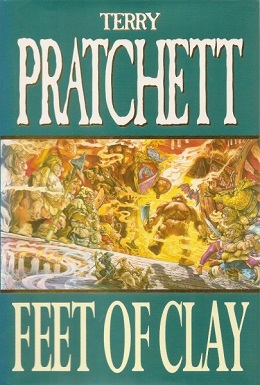
Feet of Clay is a fantasy novel by British writer Terry Pratchett, the nineteenth book in the Discworld series, published in 1996. The story follows the members of the City Watch, as they attempt to solve murders apparently committed by a golem, as well as the unusual poisoning of the Patrician, Lord Vetinari.

Richard Horatio Edgar Wallace was a British writer.
A plot twist is a literary technique that introduces a radical change in the direction or expected outcome of the plot in a work of fiction. When it happens near the end of a story, it is known as a twist or surprise ending. It may change the audience's perception of the preceding events, or introduce a new conflict that places it in a different context. A plot twist may be foreshadowed, to prepare the audience to accept it, but it usually comes with some element of surprise. There are various methods used to execute a plot twist, such as withholding information from the audience, or misleading them with ambiguous or false information. Not every plot has a twist, but some have multiple lesser ones, and some are defined by a single major twist.
James Philip O'Connolly was an English actor, director, producer and screenwriter. He is best known as the associate producer of many of the Edgar Wallace Mysteries b-films made at Merton Park Studios in the early 1960s, though he also directed a number of other low budget British movies, including The Hi-Jackers (1963), Smokescreen (1964), and Tower of Evil (1972), as well as several episodes of The Saint.
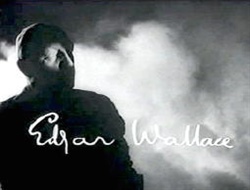
The Edgar Wallace Mysteries is a British second-feature film series mainly produced at Merton Park Studios for Anglo-Amalgamated. There were 48 films in the series, which were released between 1960 and 1965. The series was screened as The Edgar Wallace Mystery Theatre on television in the United States.

Richard Caldicot was an English actor famed for his role of Commander Povey in the BBC radio series The Navy Lark. He also appeared often on television, memorably as the obstetrician delivering Betty Spencer's baby in Some Mothers Do 'Ave 'Em.
Philip Mackie was a British film and television screenwriter. He was born in Salford in Lancashire, England. He graduated in 1939 from University College London and worked for the Ministry of Information Films Division which began a career in film.

What Have You Done to Solange? is a 1972 giallo film directed by Massimo Dallamano and starring Fabio Testi, Karin Baal, Joachim Fuchsberger, Cristina Galbó, and Camille Keaton. The plot follows a series of violent murders occurring at a Catholic girls' school in London, where a young student has gone missing.
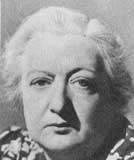
Gladys Henson was an Irish actress whose career lasted from 1932 to 1976 and included roles on stage, radio, films and television series. Among her most notable films were The History of Mr Polly (1949) and The Blue Lamp (1950).
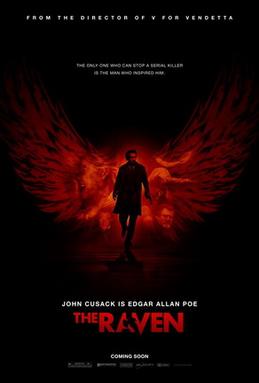
The Raven is a 2012 American crime thriller film directed by James McTeigue, produced by Marc D. Evans, Trevor Macy and Aaron Ryder and written by Ben Livingston and Hannah Shakespeare. Set in 1849, it is a fictionalized account detailing the last days of Edgar Allan Poe's life, in which the poet and author helps the police pursue a serial killer, whose murders mirror those in his stories. While the plot of the film is fictional, the writers based it on some accounts of real situations surrounding Edgar Allan Poe's mysterious death. Poe is said to have repeatedly called out the name "Reynolds" on the night before his death, though it is unclear to whom he was referring. The film stars John Cusack, Alice Eve, Brendan Gleeson and Luke Evans. Its title derives from Poe's 1845 poem "The Raven", in a similar manner to the earlier unrelated 1935 and 1963 films.
The Clue of the New Pin is a 1929 British crime film directed by Arthur Maude and starring Benita Hume, Kim Peacock, and Donald Calthrop. It was made at Beaconsfield Studios.

The Clue of the New Pin (1961) is a British crime film directed by Allan Davis and starring Paul Daneman, Bernard Archard and James Villiers. It was one of the series of Edgar Wallace Mysteries, British second-features, produced at Merton Park Studios in the 1960s.

The Clue of the New Pin is a 1923 crime novel by the British writer Edgar Wallace. it was first published by Hodder & Stoughton in London, 1923.
Bryan Edgar Wallace (1904–1971) was a British writer. The son of the writer Edgar Wallace, Bryan was also a writer of crime and mystery novels which were very similar in style to those of his father. He was named after the American politician William Jennings Bryan who his father encountered during a trip to North America.
Allan George Davis was an Anglo-Australian actor, director for film and theatre, and producer for film and television.

"The Girl in the Tower" is the fourteenth episode of the seventh season and the 147th episode overall of the American fantasy-drama series Once Upon a Time. Written by Dana Horgan and Leah Fongand directed by Antonio Negret, it premiered on ABC in the United States on March 23, 2018.
Stephen Tolkin is an American television writer, director and composer. He worked on a number of American television series including Brothers & Sisters, Perception, Legend of the Seeker and Switched at Birth. He has been nominated for an NAACP Image Award for Outstanding Directing in a Motion Picture (Television) for A Day Late and a Dollar Short.

Clue of the Twisted Candle is a 1960 British crime film directed by Allan Davis and starring Bernard Lee, David Knight and Francis De Wolff. Part of the long-running series of Edgar Wallace Mysteries films made at Merton Park Studios, it is based on the 1918 novel The Clue of the Twisted Candle.
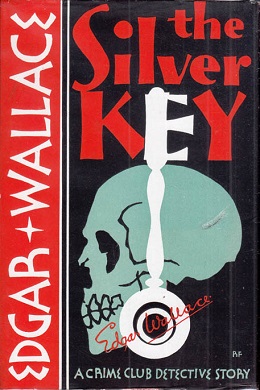
The Clue of the Silver Key is a 1930 thriller novel by the British writer Edgar Wallace.